15 Types of Door Sweeps and Under Door Seals
Gaps are normally found between the bottom part of the door, the frame, and the floors. For some people, gaps aren’t a big deal. But for most people, it’s a major problem that needs to be fixed immediately. Luckily, there are effective ways to solve that problem. Numerous manufacturers are producing under-door sweeps that will correct those gap issues.
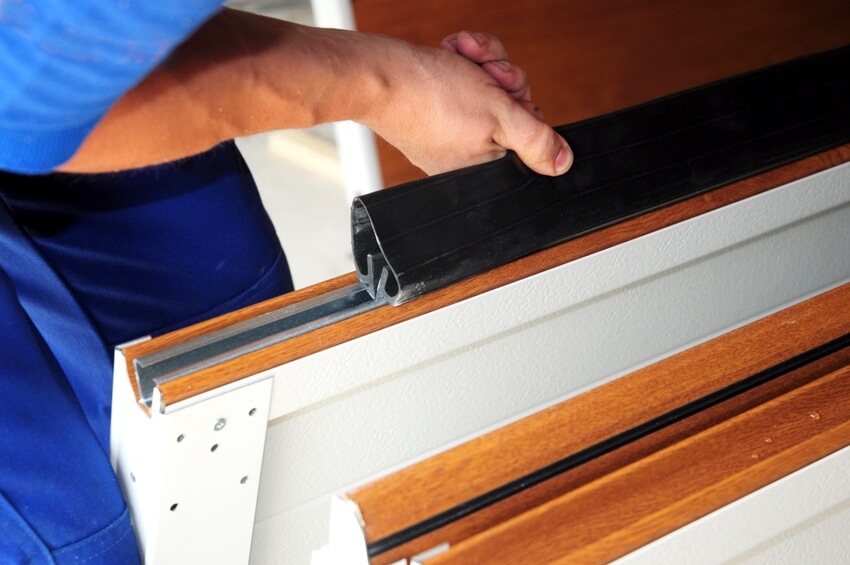
In reality, gaps do need to be fixed and they shouldn’t be neglected. These small openings could either allow cold air to go inside the space during the winter season or prevent air-conditioned rooms from getting cold during summer. Gaps also give way to insects and other pests. Door sweeps and under-door seals play a very crucial part in fixing these gap issues. In this article, we will discuss the definition of a sweep and under-door seal. We’ll also talk about the categories under these two things.
What Is A Sweep for Doors?
The main function of a door sweep is to seal the gaps that are found between the threshold and the bottom of your doors. With properly installed sweeps, heating, or cooling your interior space won’t be a fuss. Dust, insects, or rodents will be prevented if under-door sweeps are installed in those gaps.
What Is An Under Door Seal?
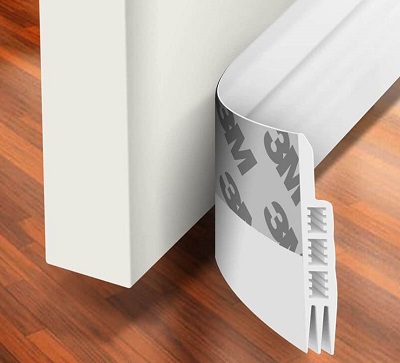
Under-door seals are also called bottom seals. These are designed to seal the gaps between the door and the flooring.
The usual style of an under-door seal is made up of sweep seals that contain an aluminum-made holder along with a pliable rubber strip or brush strip attached underneath.
Door Sweep Vs Under Door Seal
Door sweeps are usually applied to common thresholds that have a 0.13-inch gap between the bottommost part of the door and above the threshold.
Generally, a sweep is a long metal strip that carries a seal that’s made out of silicone, nylon brush, or neoprene. The surface of the long metal strip is installed to the door’s bottom part.
Under-door seals function the same as sweeps. Under-door seals can be either mounted directly to the bottom or wrap the whole bottom on one or both sides. However, some under-door seals can seal the gaps more effectively than sweeps.
Brush Sweep
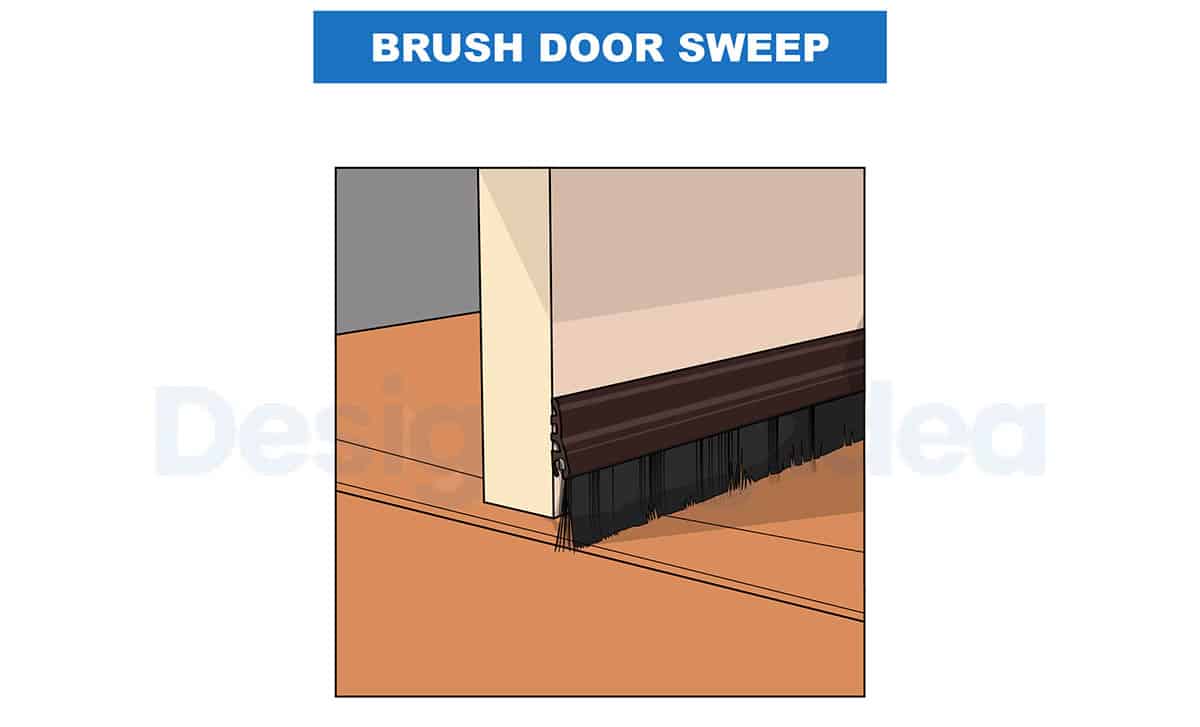
A brush sweep is generally mounted on one side of exterior doors. The brush sweep resembles a broom and it has two functions. First, it helps in clearing away detritus and dust. Second, it includes sealing the bottom part of the door.

This type of sweep is effective in terms of preventing cold air from getting inside your house during the winter season. However, the downside of this sweep is it isn’t durable. The bristles on these sweeps will deteriorate over time and it won’t last very long.
Aluminum Sweep
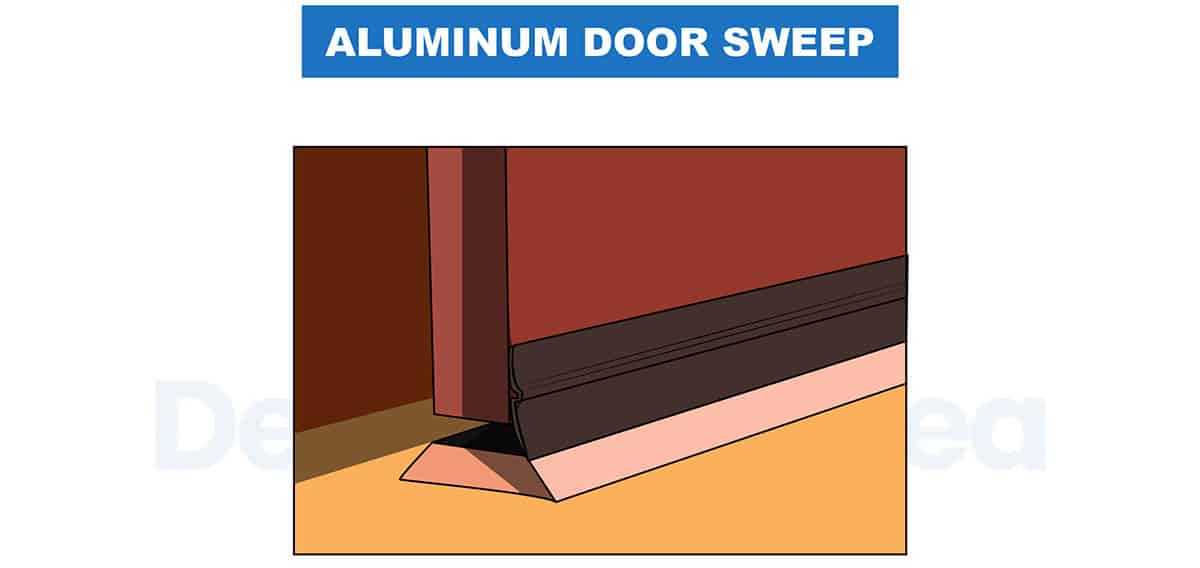
Aluminum sweeps are superior in terms of stopping moisture, insects, and dust from coming inside your interior space.
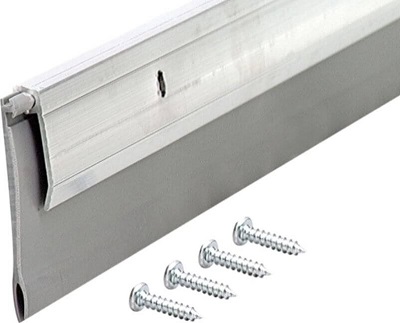
Sweeps that are made out of aluminum with reinforced or neoprene rubber are efficient in sealing gaps properly and they do not rust over time. They also can be painted and are easy to install.
Adhesive Sweeps
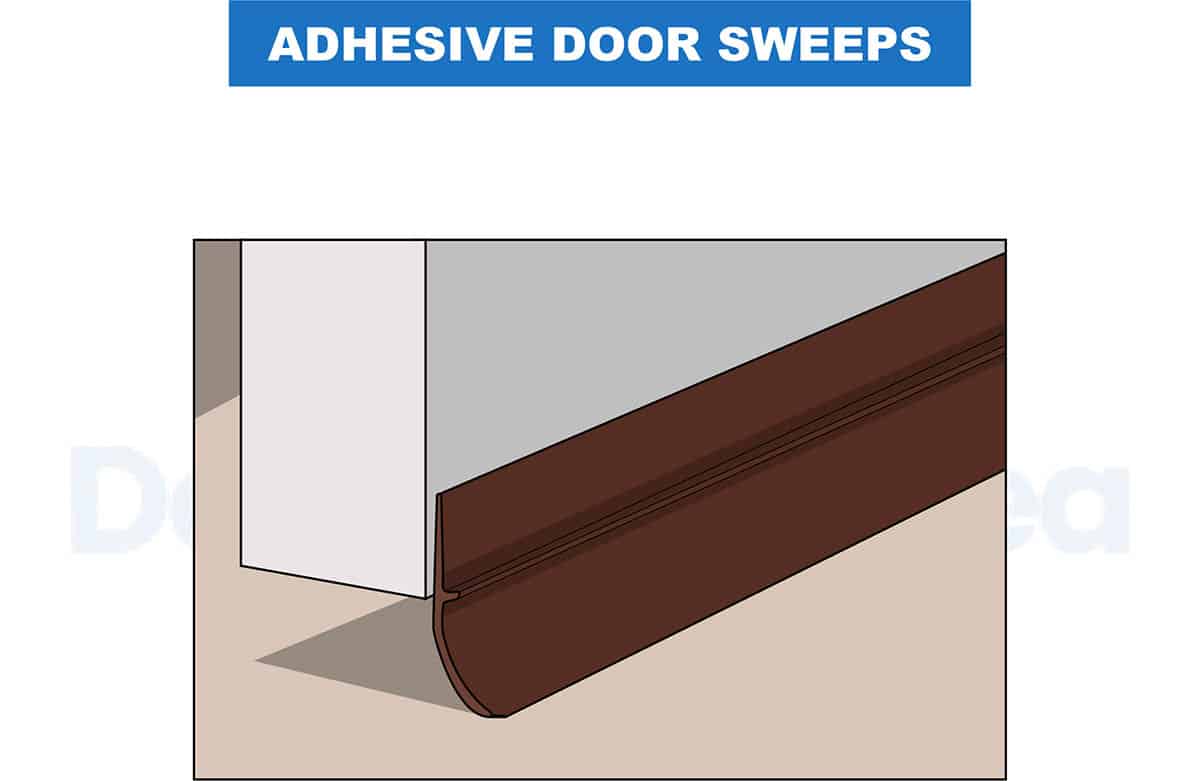
These sweeps do not require screws to be mounted as they already have their own adhesive tapes or stickers. Adhesive door sweeps can either be made out of plastic or aluminum.
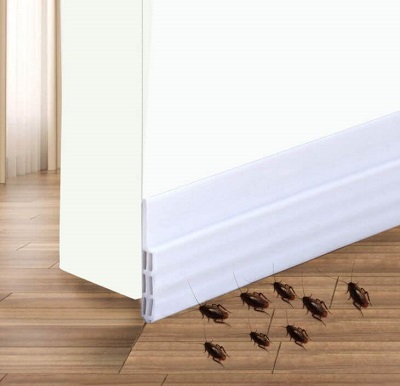
These sweeps are efficient against dust, moisture, insects, and drafts. They can usually stick to all types of doors.
Rubber Sweep
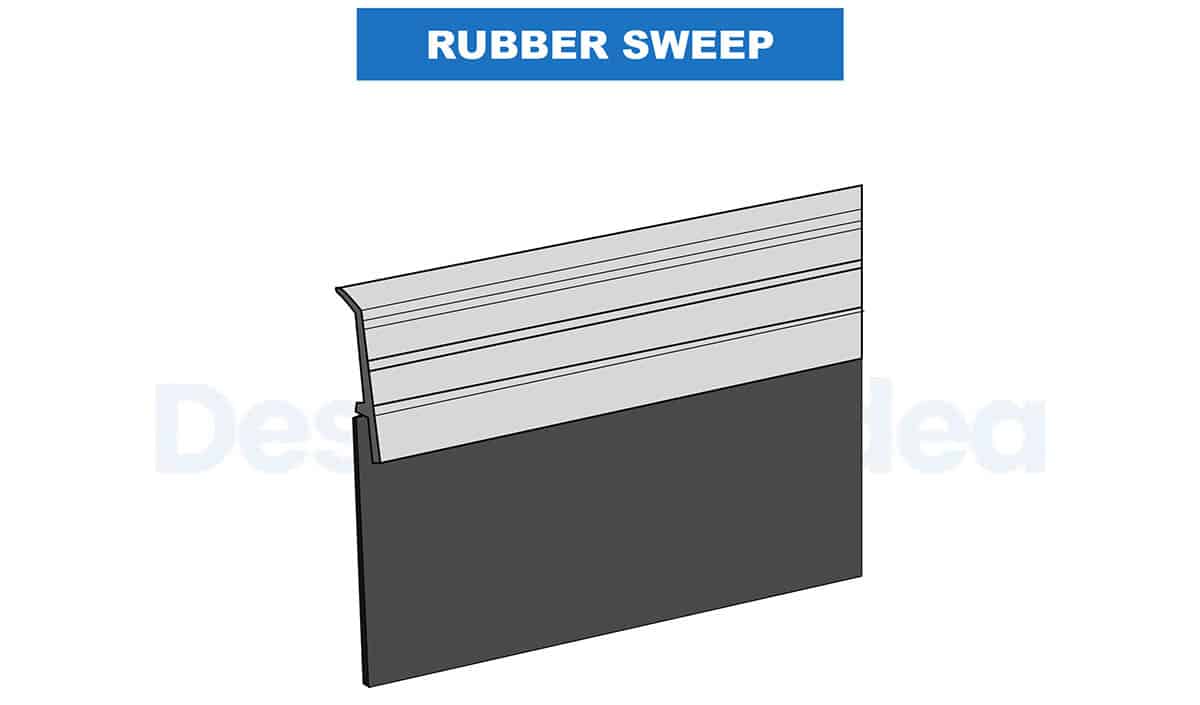
A rubber sweep can be a single piece of rubber that is attached to the side of the door with a peel-and-stick adhesive or glue. They also come as a rubber draft protector that is attached to a piece of aluminum that can slide or snap into the kerf-cut opening at the bottom.
Since rubber can become brittle with exposure to extreme heat and cold elements they will need to be replaced every couple of years. Most rubber sweeps can be cut to fit your size doorway with a hacksaw.
Flat Sweep
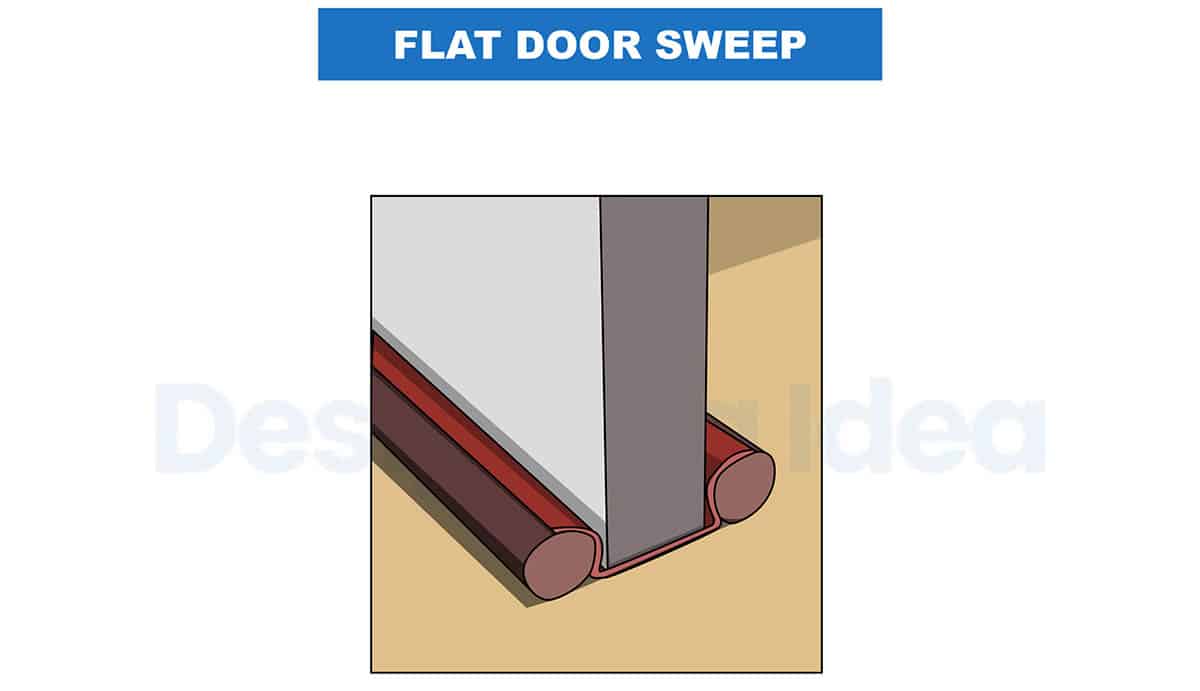
Just like a brush sweep, a flat sweep is also attached to the exterior door. Generally, it could be made out of materials such as nylon, vinyl, or silicone.
It offers an aesthetic appearance that provides more attraction and value to the door. Yes, it is way more appealing than brush sweeps.
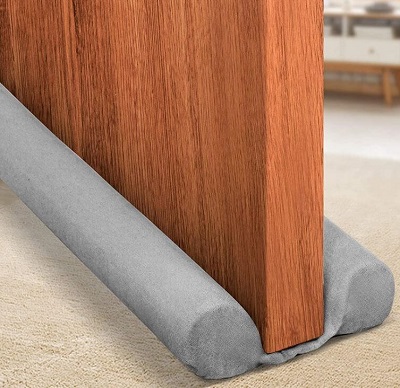
See this Holikme twin-door draft stopper at Amazon [Sponsored link]
Flat sweeps, on the other hand, could be more difficult to install than brush sweeps.
Tubular Sweep
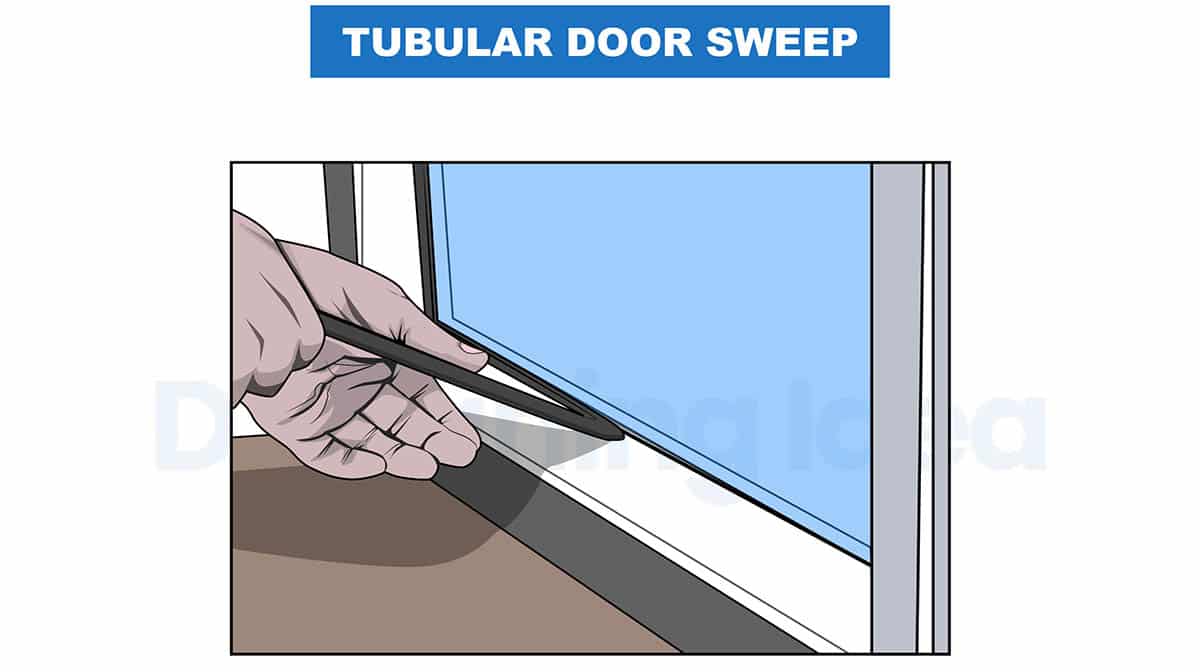
If you want to opt for a sweep that will perfectly and securely fit the bottom of your door, a tubular sweep might be a good choice as it seals both sides underneath.
It can function on both exterior and interior doors. Also, it is very easy to mount and replace. It is a popular choice as it is efficient in blocking odors, insects, and cold air.
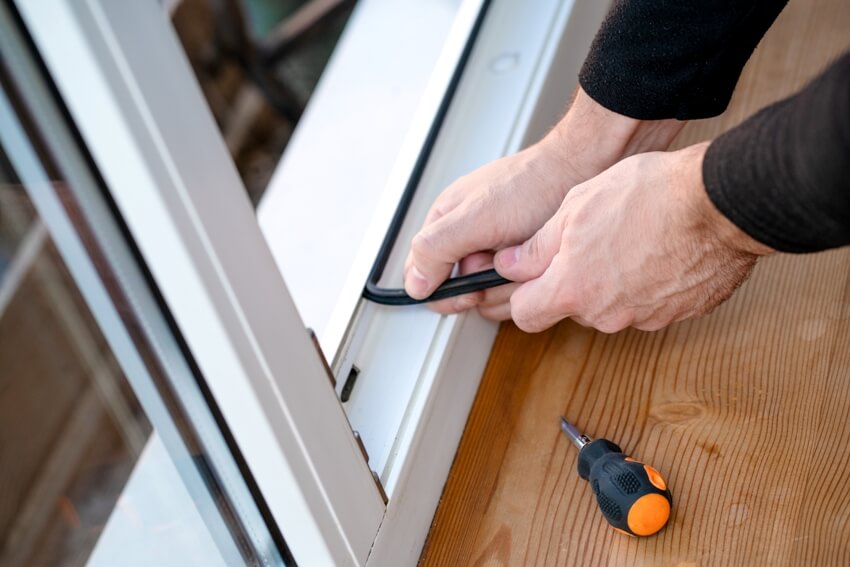
The only drawback of tubular sweeps is that they are not long-lasting.
U-shaped Sweep
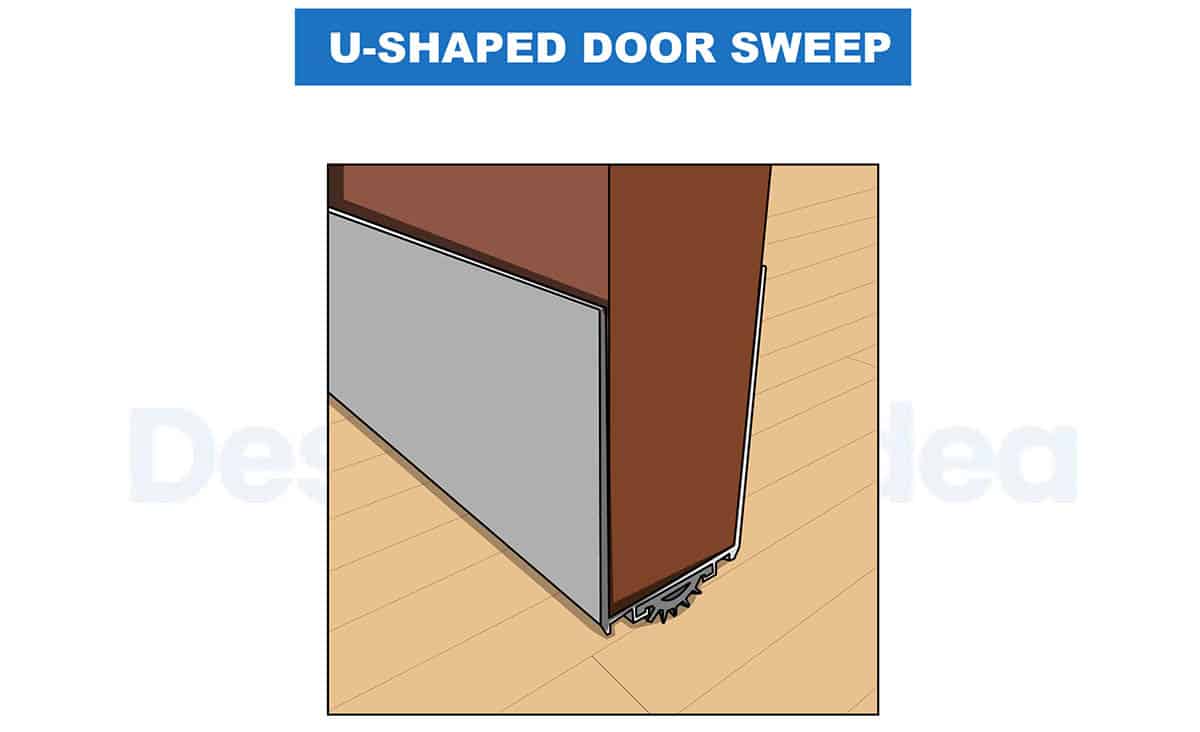
This type is also known as a wrap-around sweep. It provides one sweep to each side of the door. Meaning, you’ll have two sweeps sealing the bottom of your doorway.
That is to provide an additional level of protection to efficiently keep out pests, smoke, odor, and air. It is very much simpler to install than most types of sweeps. Most of the u-shaped sweeps can be painted so that you can match them with the color of your doors, walls, and floors.
Weather Stripping
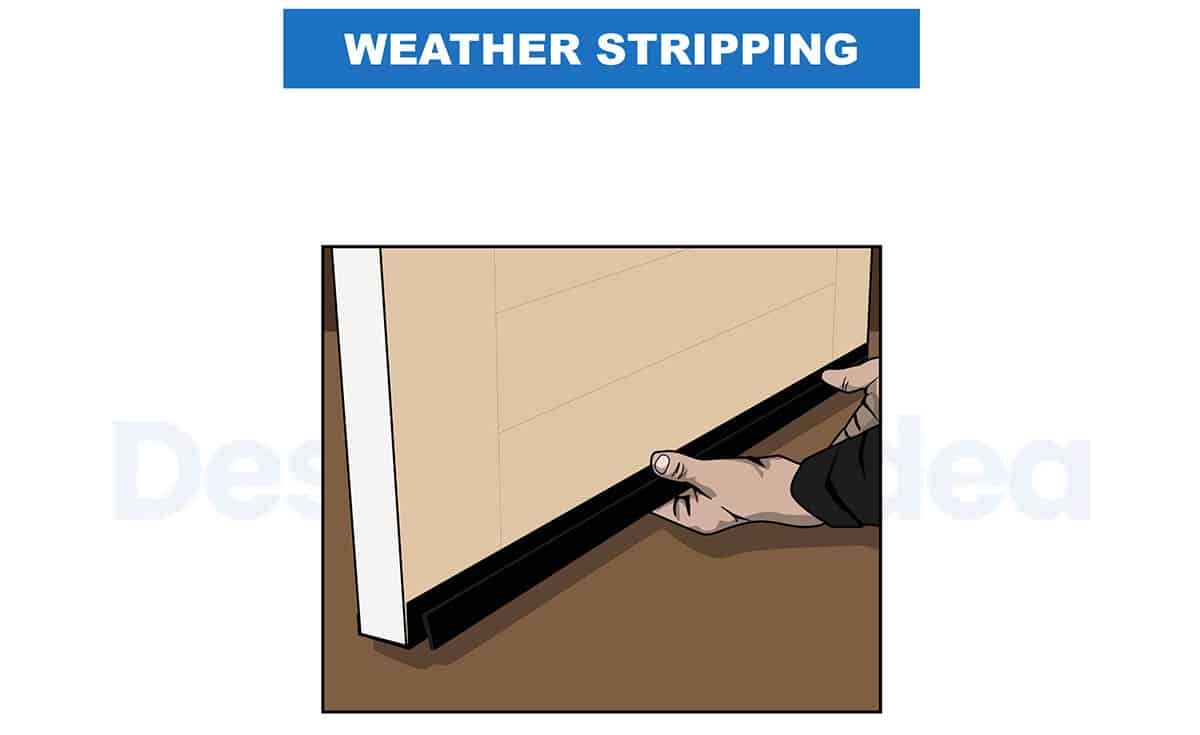
A less expensive way of sealing the gap between your threshold and the door is called weather stripping. It is also known as gasketing. Weatherstripping won’t require complicated installation. It can be mounted along with self-adhesive brands. This is a very fast method of solving gap issues.
However, the downside of weather stripping is that it is not appealing and long-lasting. But if you want to opt for a temporary solution for sealing the gap, this is a good option. Under this method, there’s also a way of sealing small gaps. It is by using V-strips. This is efficient in terms of keeping out insects and air.
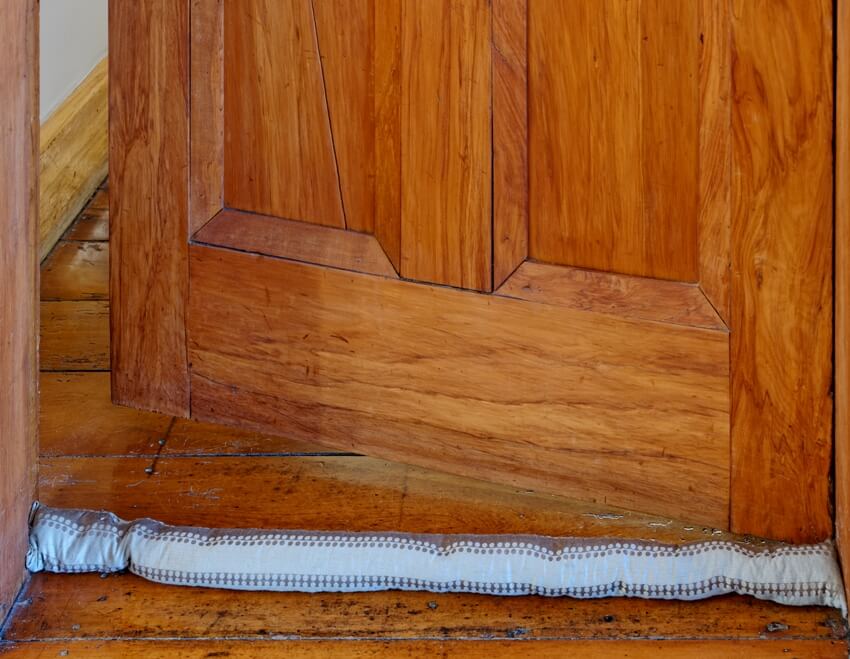
Its longevity is very promising as well. V-strips can either be made out of rubber or metal. They are very easy to mount. On the other hand, they also aren’t appealing and they can’t seal huge gaps.
Foam Stripping
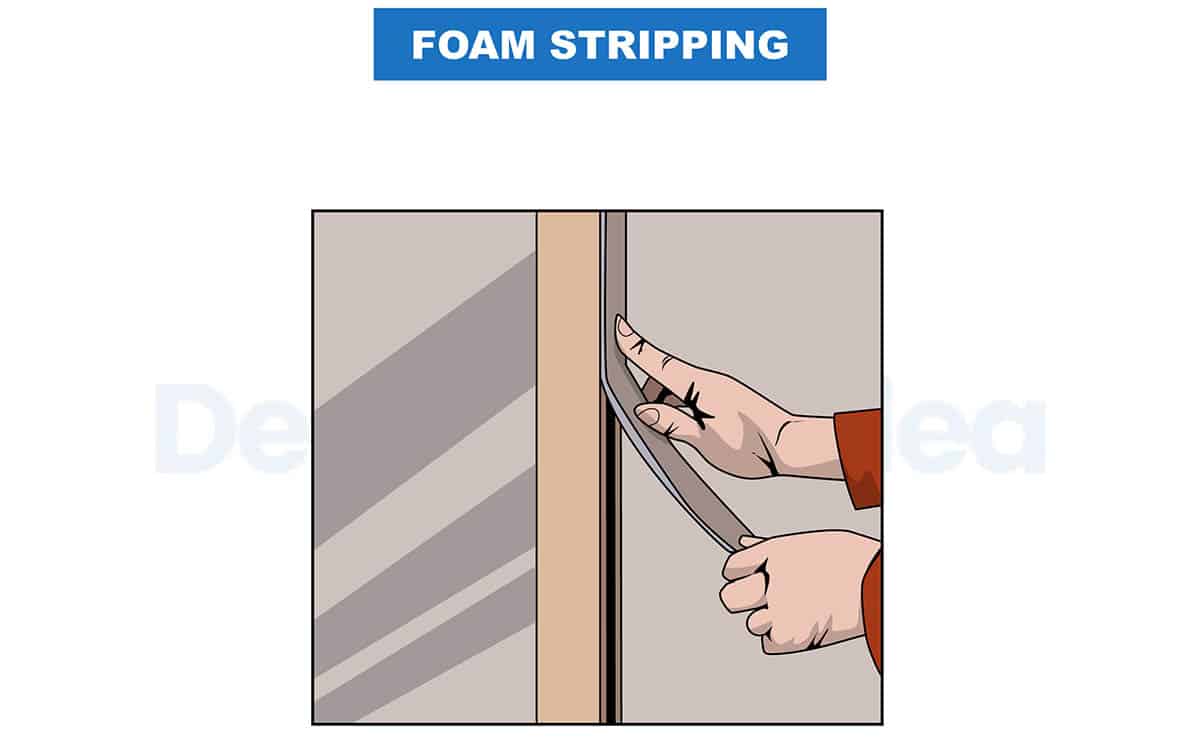
This method is also under the category of weather stripping although it is particularly used for windows and doors. But compared to actual weather stripping, foam stripping is generally much thicker and more robust.
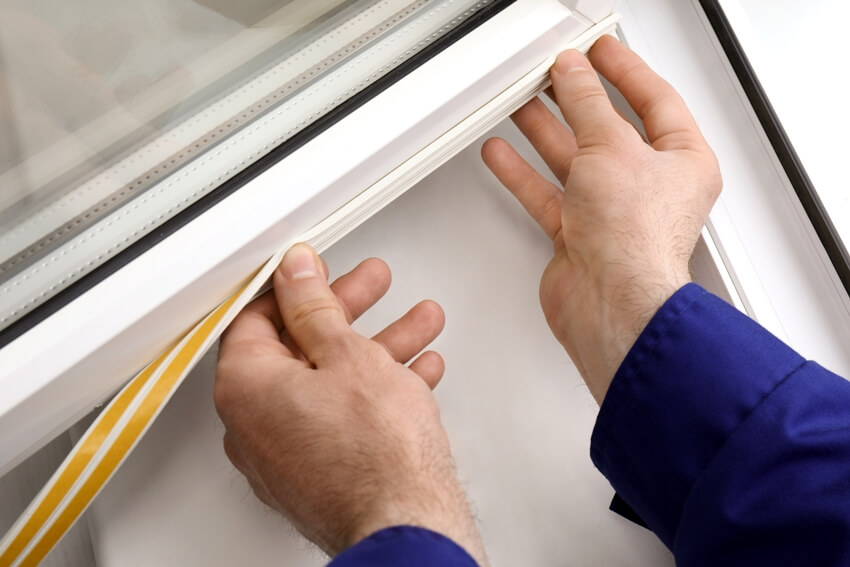
Closed cell foam weather stripping is very affordable and uncomplicated to mount. It can virtually match other great door bottom seals in terms of keeping out odor, air, and pests.
Double Draft Seals
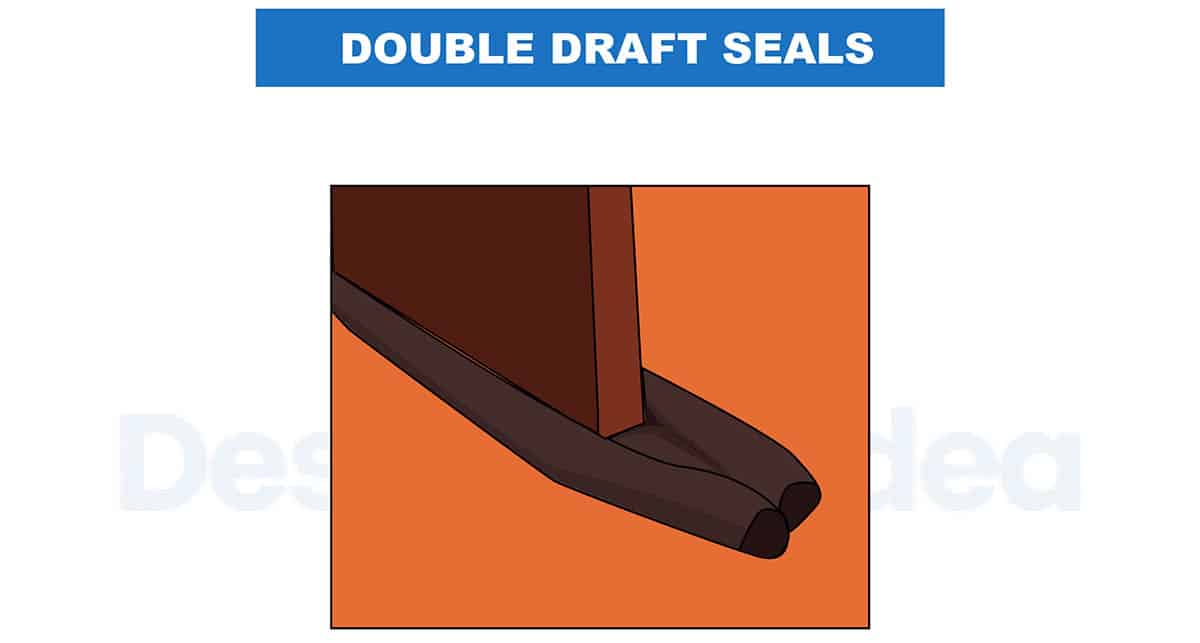
These double-draft seals are mainly used for insulating your door on each side. It provides long-lasting protection against water, insects, pollen, dust, moisture, and drafts.
Normally, the first level of the seal is to block drafts and the second level is to keep out water and moisture. They often incorporate fabric coverage and foam-based inserts. They are mounted to the bottom along with stretchable straps.
Triple Draft Seals
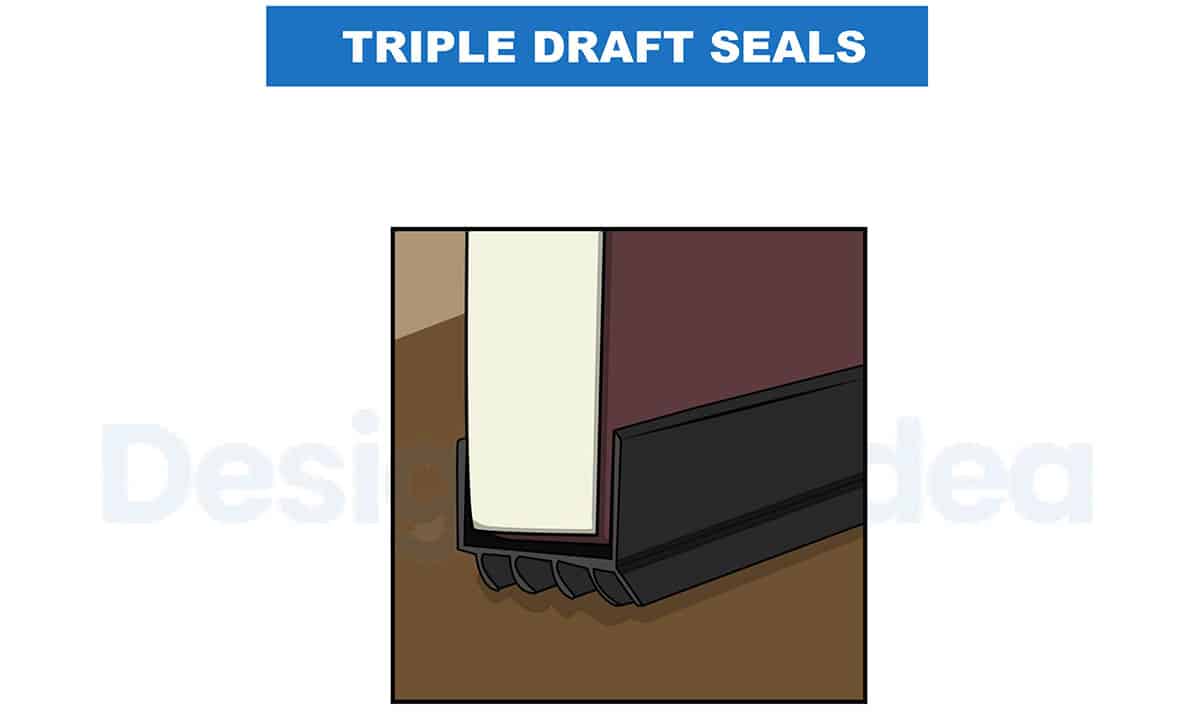
A triple draft seal is normally a slide-on door seal that is very efficient in terms of blocking drafts under doors. Read more about the most popular types of sliding doors here.
Just like double-draft seals, they can also prevent insects and pollen from getting inside your interior space. However, they have three levels of protection. The first seal helps in retaining the temperature inside the space.
The second seal blocks the drafts while the third layer of the seal works to keep out moisture and water. Triple draft seals are very easy to install as well.
Door Shoe
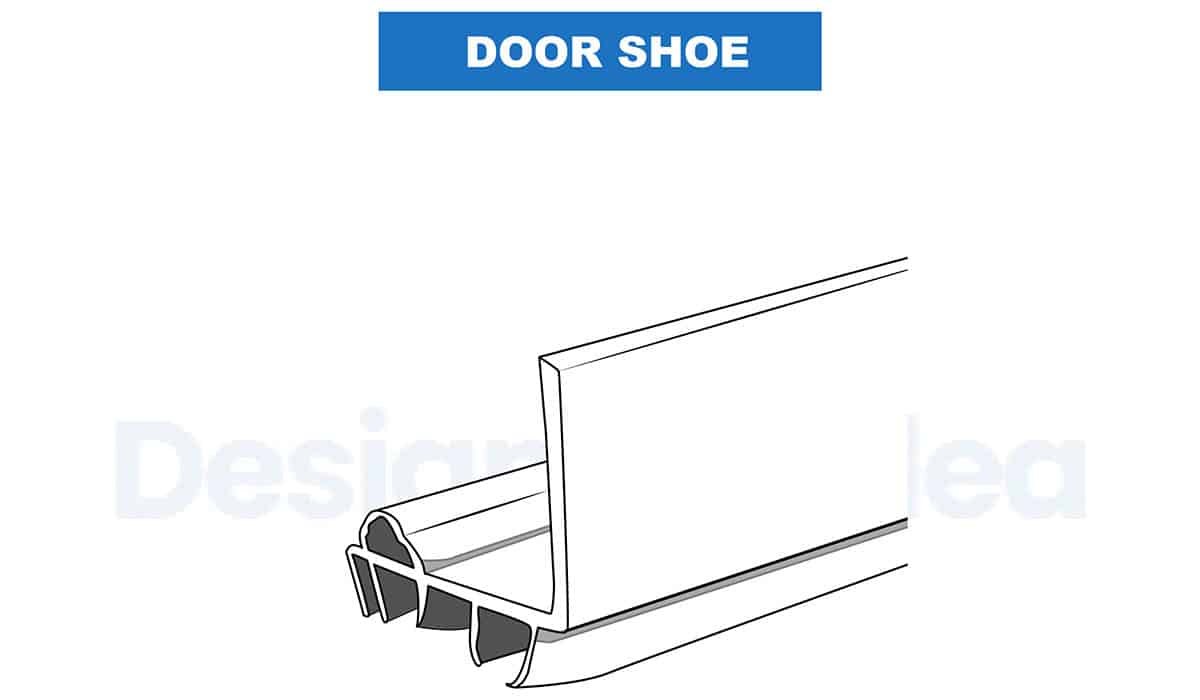
A door shoe can either seal one side of your door or wrap the bottom of it. The undercut of your panel must be correctly coordinated with bottom so they can fit properly.
An L-shaped door shoe is a good choice for sealing your exterior doors. Although it necessitates careful installation, it’s very efficient in terms of preventing air, pests, odor, and smoke. L-shaped shoes are normally made out of sturdy metal-based materials that ascertain longevity.
Automatic Door Bottom
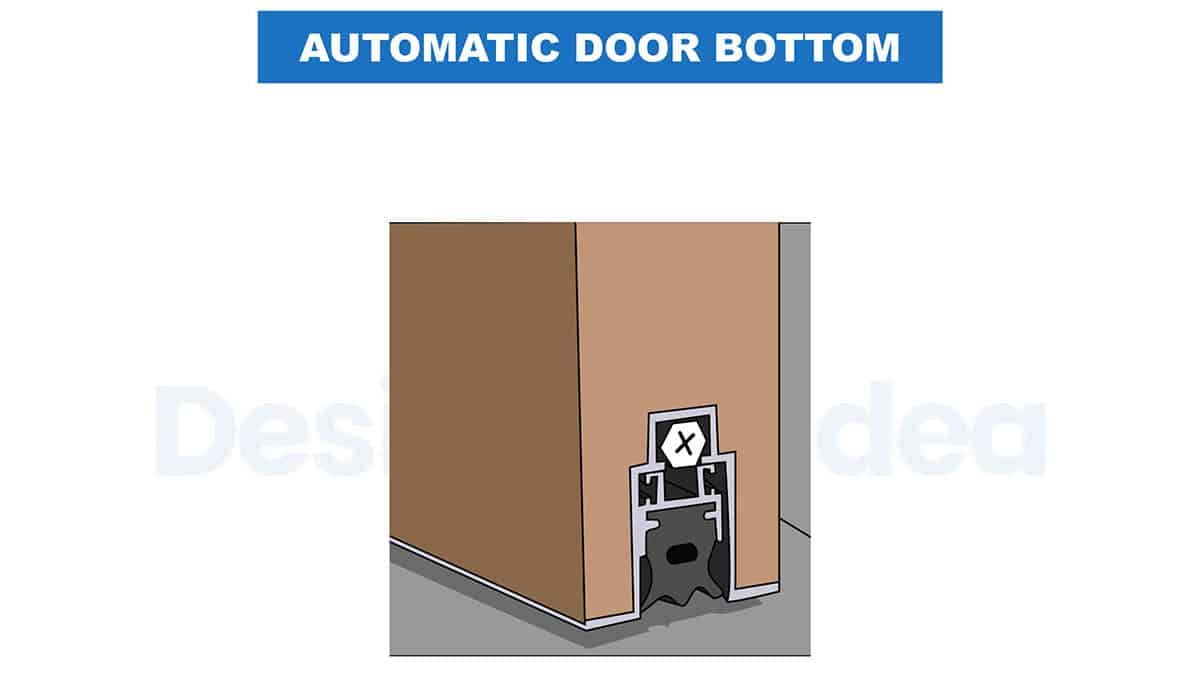
Automatic bottom seals effectively seal the gaps by just activating its button. Once the door is opened, the button will be released and the sealing material will pull itself and fully seal underneath.
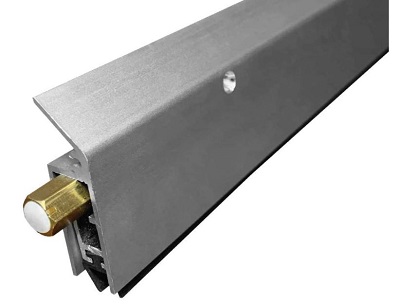
Compared to sweeps, automatic under-door seals can provide a maximum seal. However, it could be hard to install. And since it is a high-end option that will fully secure your doors, it might be an expensive selection.
Felt Door Bottom
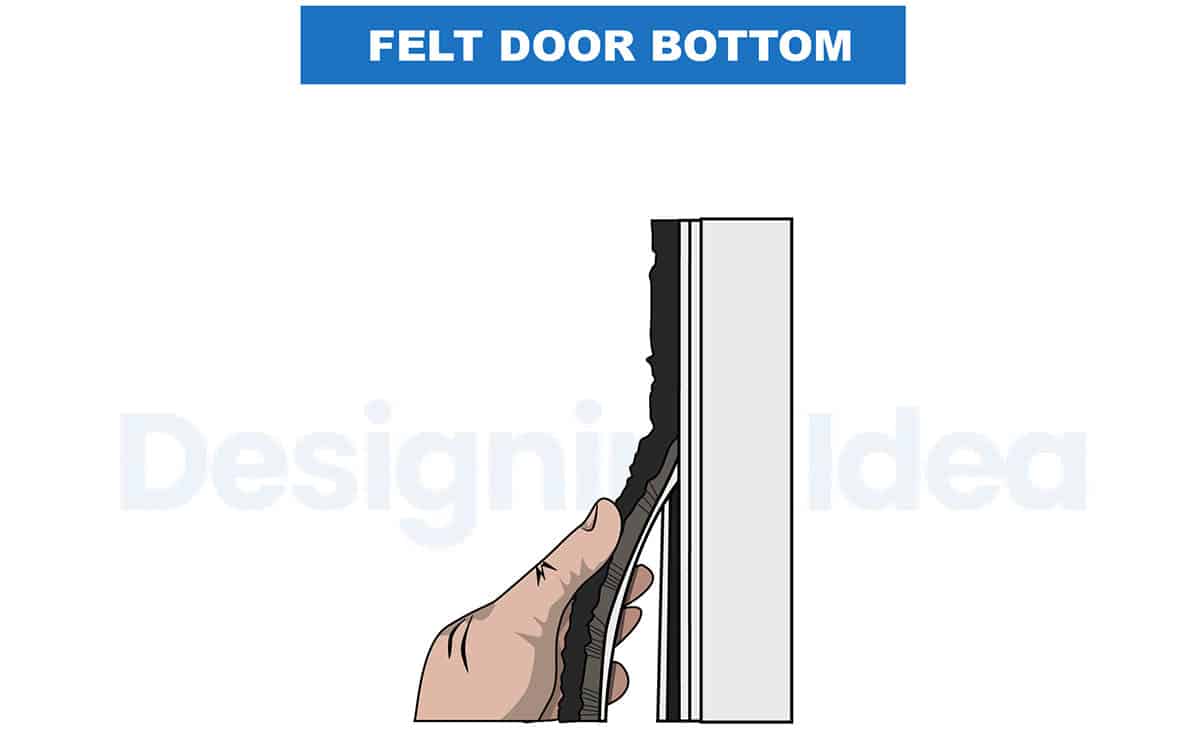
A felt door bottom is quite the same as weather stripping and foam stripping. It is very fast and simple to attach. One major advantage of it is that it is fire-resistant, very long-lasting, and affordable.
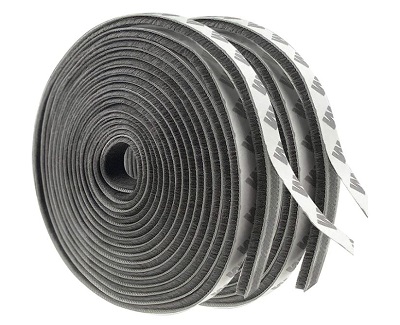
See this weather stripping self-adhesive felt brush strip at Amazon [Sponsored link]
Integrated Sweep

An integrated sweep is built into the door when you purchase and is not noticeable. These types are durable and offer high-quality performance. Since the seal is built-in they can help prevent energy loss from day one and can help prevent dust, cold, and sound from entering through the bottom.
The problems arise when it comes time to change them out as they may require a professional installer and a higher replacement cost.
Best Type Of Sweep To Use

Generally speaking, the best option for weatherproofing doors is automatic bottom seals, as they give the utmost security that will truly weather-seal the gaps most efficiently.
For exterior doors, the best types of products would be a sweep with weather stripping, a combination of aluminum and brush sweep, a U-shaped sweep, and a metal sweep with triple draft seals. These options provide the best protection.
For front doors, the best option could be an adhesive sweep or automatic bottom seal. For metal doors, the best type of sweep could be a combination of aluminum and brush sweeps or a metal-based U-shaped sweep.
Do you have experience using door weatherstrip products? Share your questions and tips in the comments area below. For more related ideas, visit our gallery showcasing attractive front door colors with their meanings.





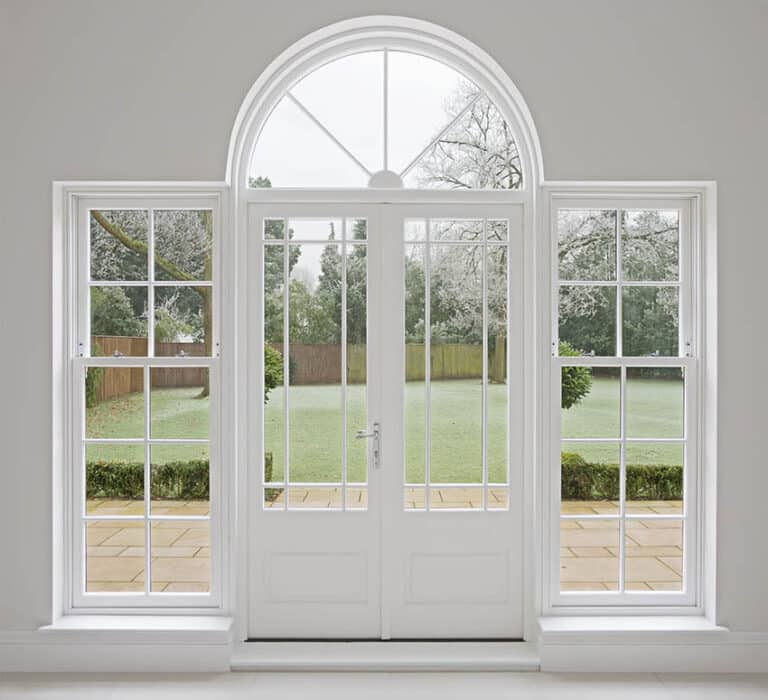

We are looking to reduce the noise across a pocket door. We thought that brush sweeps would be useful at the top and in-wall sides. The strike side we will use foam gaskets. The bottom of the door may be a drop gasket or another brush. The bottom though, would have to be adhered to the bottom or routed out. We’d like to know if you can advise us as to whether a pile brush or regular brush sweeps would be better.